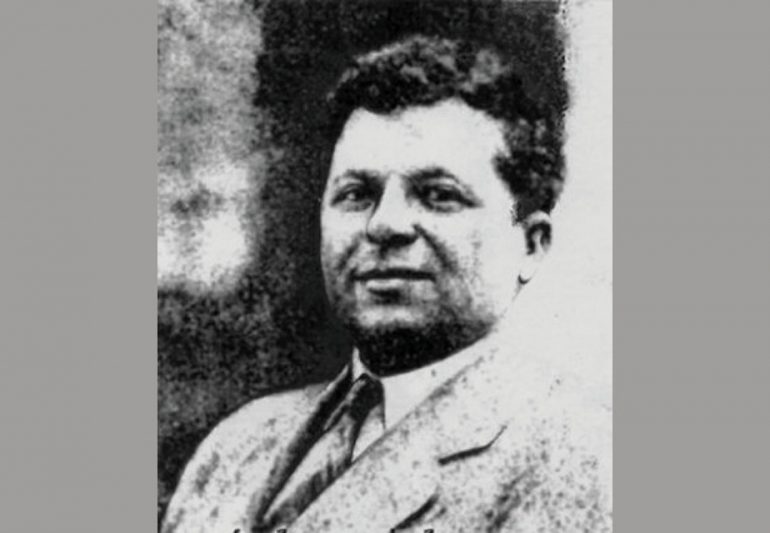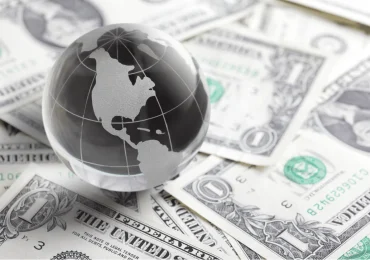Grigol Kobakhidze’s journey is a long one, taking him from Racha to Tbilisi, from Tbilisi to the United States, from the United States to great business success.
Grigol “Gigo” Kobakhidze was born into a peasant family in the village of Tkhmori, Ambrolauri Raion, in 1883. He received his primary education at home, before studying with a priest in a local parish. The young Kobakhidze eventually began working at the newly opened glass factory in Borjomi, where his older brother Levan was a senior machinist.
He spent four years in Borjomi, learning every technique employed at the factory, while devising a method to boost productivity. Kobakhidze then moved to a glass factory in Tbilisi, and in 1902 to he moved to Odessa. From 1903, he worked at the French-owned Konstantinovka glass factory in the Donbass Industrial Center. During the course of Russia’s 1905-1907 revolution, Kobakhidze was arrested and threatened with deportation. It was during this period that he met his future wife Dasha Nodvikova, who was of Swedish origin, and became friends with Evgeni Ignatiev, who would later become his business partner in the United States.
In 1907, Grigol Kobakhidze moved to Germany via Poland, settling in the Bavarian city of Munich. With help from German glass manufacturing specialists, he opened a small glass production unit there. However, in 1908, he decided to relocate to London, where he was employed as an ordinary worker at a local glass factory. A year later, he travelled to the United States together with his wife. At the time, there was already a community of Georgians (including Rachvelians) in America. They helped Kobakhidze settle in New York, as he earned his living by baking bread. Kobakhidze then spent nine years working for General Electric together with his wife. During this time, he invented and patented several new types of fountain pens.
In 1919, Kobakhidze opened a large factory near Boston, Massachusetts. By 1922, the Coby Glass Products Company, which manufactured 45 types of goods (including medical, chemical and construction glass products), had become renowned across the east coast of the United States. Various data shows that his company had a $15 million turnover and made a $4 million in profit in 1929.
Parallel to his business activities, Grigol Kobakhidze never distanced himself from political and social life, eagerly supporting the independent Georgian state that briefly existed between 1918 and 1921. He always maintained his desire to return home, but in 1918-1921, his business was still in its infancy. Even after Georgia was occupied by the Russian Bolsheviks, Kobakhidze continued with his attempt at establishing a large glass factory in his native country. However, negotiations with Soviet authorities ultimately stalled and his idea never came to fruition. Between 1924 and 1928, he visited Georgia twice. In his home region of Racha, he built a school, a hospital, a priest’s house, two bridges over the Shareula River, as well as several commercial markets, which he also supplied with goods. Between 1929 and 1933, the United States underwent the Great Depression. George Coby’s company lost millions of dollars, which led to his business partner Eugene (Evgeni) Ignatiev taking his own life. In spite of the mounting problems, Coby managed to overcome the critical situation by establishing a minor factory, manufacturing small glass items. He once again began producing stationary items, and managed to find a patron for his firm. Another renowned USbased Georgian manufacturer named George Matchabelli, helped Coby’s expansion by ordering perfume bottles for his firm Prince Matchabelli.
On December 7,1941, when the United States entered the Second World War, Kobakhidze appealed to the U.S. government for financial aid to restore his glass manufacturing enterprise and assist in military production. He soon received a state license and $2 million. His new factory in Pawtucket, Rhode Island, manufactured products for chemical and medical labs, as well as field hospitals. His products were supplied to Canada and other allied countries. Two of his most prominent inventions – waterproof concrete and the glass construction block –are connected to the state of Florida, where Kobakhidze also resided.
After the war, Kobakhidze introduced a new product in his manufacturing line in the form of Christmas decorations. He created electric lamps that would replace real candles on Christmas trees. Colored glass ornaments of various shapes were sold in boxes of 12 and 24, carrying the name “Coby”. George Coby and his wife did not have any children. Their commercial activities were carried on by the Paglia brothers from Italy, who became the Coby’s business partners. Grigol Kobakhidze died in 1967, at age 84. The Paglias did not allow his name to be forgotten and maintained the company name.

















